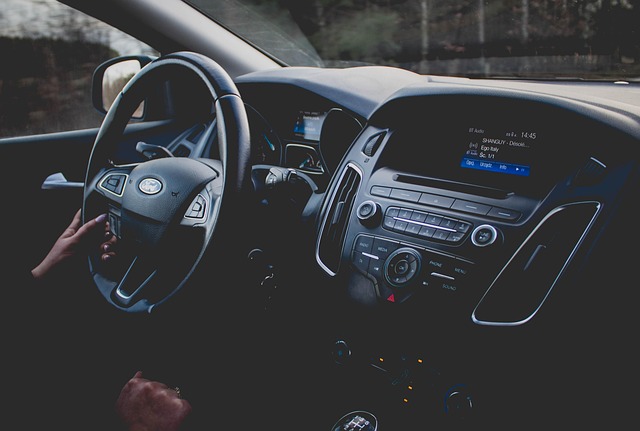Looking to register your car in California? This guide breaks down the process step-by-step, ensuring a smooth transition. From understanding key requirements for car registration in California to gathering necessary documents for VIN verification, this article is your go-to reference. Learn how to perform a Vehicle Identification Number (VIN) check efficiently and complete the registration either online or in person. Discover the fees involved and receive your registration certificate promptly.
- Understand the Requirements for Car Registration in California
- Gather Necessary Documents for VIN Verification
- Perform Vehicle Identification Number (VIN) Check
- Complete the Registration Process Online or In-Person
- Pay the Required Fees and Receive Your Registration Certificate
Understand the Requirements for Car Registration in California

Before registering your car in California, it’s crucial to understand what’s required. The Golden State has specific guidelines that vehicle owners must adhere to ensure their cars meet safety and environmental standards. One key aspect is the verification of the Vehicle Identification Number (VIN). This unique code is essential for identifying your vehicle and confirming its authenticity, a process often referred to as VIN inspection or VIN verification.
In California, you typically need to have your car inspected by an authorized official or service center. For convenience, many opt for mobile VIN inspection services that come to your location. These services provide a swift and efficient way to complete the VIN verification process, ensuring you can register your vehicle without any delays.
Gather Necessary Documents for VIN Verification

To register your car in California, you’ll need to undergo a Vehicle Identification Number (VIN) verification process. This involves gathering crucial documents that confirm your vehicle’s authenticity and history. Start by locating your car’s VIN, typically found on the vehicle’s certificate of ownership or the driver’s side door jamb. Then, gather important paperwork such as proof of insurance, registration from the previous state (if applicable), and a completed California Vehicle Registration Application.
Additionally, consider obtaining a mobile vin inspection or using a mobile vin verifier to streamline this process. These services can provide instant validation of your VIN, ensuring that all details match with the vehicle’s record. Having these documents ready will significantly facilitate the registration process and help avoid potential delays at the California Department of Motor Vehicles (DMV).
Perform Vehicle Identification Number (VIN) Check

Before registering your car in California, performing a Vehicle Identification Number (VIN) check is a crucial step. This process involves verifying the vehicle’s history and authenticity through a unique 17-character VIN code. You can conduct this vin verification either through an online service or by visiting a local DMV office. An accurate VIN inspection ensures that the car you’re registering has no outstanding issues, such as outstanding loans, accidents, or theft reports.
For your convenience, consider using a mobile vin verifier or performing a mobile vin inspection. These services allow you to check a vehicle’s history remotely, saving you time and effort. By ensuring the car’s VIN is clean, you’re taking an important step towards securing a smooth registration process in California.
Complete the Registration Process Online or In-Person

You have the option to complete your California car registration either online or in-person. The former involves a straightforward process where you’ll need to provide essential details like vehicle information, owner’s personal data, and payment methods through the DMV’s website. Before proceeding, ensure that your Vehicle Identification Number (VIN) is verified for accuracy, which can be done using a mobile vin verifier or by conducting a basic VIN inspection. This step is crucial as it helps in identifying any potential issues with the vehicle’s history.
Once all necessary data is entered and confirmed, you’ll be guided through the payment process. After successfully completing the online registration, you can choose to receive your registration documents via email or mail. Alternatively, visiting a local DMV office allows for a more traditional approach where you interact with staff, present required documents, and pay in person. This method might offer quicker processing times, especially if you have all the necessary paperwork ready.
Pay the Required Fees and Receive Your Registration Certificate

After submitting your application, it’s time to pay the required fees for car registration in California. These fees vary based on the type of vehicle and its age, so be sure to check the current rates. You can typically pay online or at a local DMV office using a debit or credit card. Once your payment is processed, you’ll receive your Registration Certificate, which confirms that your vehicle is legally registered with the state.
This certificate is more than just a piece of paper; it indicates that your vehicle has passed all necessary inspections, including a critical vin verification process. This ensures that your car’s unique vehicle identification number (VIN) is accurate and matches the make, model, and year declared on your registration documents. Even if you opt for a mobile vin inspection or mobile vin verification service, which allows for convenience by having an inspector come to you, the ultimate goal remains the same: to verify your car’s identity and ensure compliance with California’s registration regulations.
Registering a car in California is a straightforward process that requires understanding the essential steps, gathering the right documents, and completing the necessary verifications, including a crucial VIN check. By adhering to these guidelines, you can efficiently navigate the registration process online or in-person, ensuring your vehicle is legally recognized in the Golden State. Remember, proper registration not only complies with California laws but also facilitates smoother ownership experiences and access to public roads.
